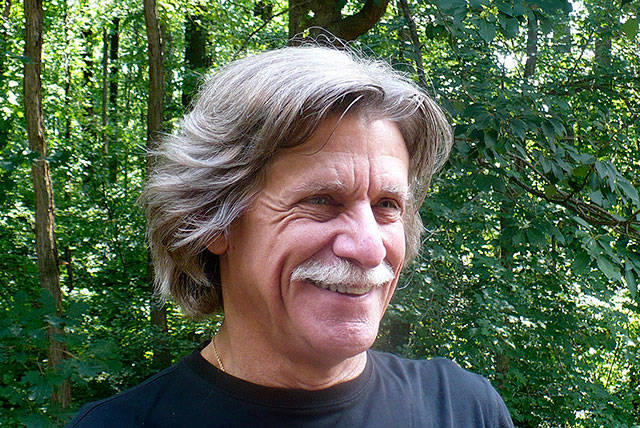The other day I had an interesting conversation with a friend who lamented encountering a particular attitude when she was out riding local trails: Some people seem to think they’re exempt from the posted rules governing use of the trail.
In the context of our conversation her point was that putting up speed limit or warning signs, or explaining what’s allowed and what isn’t seem ineffectual, that they’re ignored as much as — or more than — they’re followed. She was concerned and frustrated because she was finding it more common on the trail; she despaired of finding any real solution, of changing that attitude and the kind of behavior it inevitably leads to.
I happen to share her concern and frustration. I’ve seen that attitude being displayed often on the trail and on the roadways. I know, too, from experience, that as the number of people using trails or roads goes up, so does the number of those who act as though neither posted rules nor basic courtesy apply to them. We all know how it feels when we see someone like that, and the thought that we’re likely to encounter them more frequently is disturbing to put it mildly.
What do we do about it?
To start, it’s important to keep in mind that the vast majority of those who use our trails and roads do respect and follow the rules; they are thoughtful, courteous, and considerate of others.
Many times unsafe acts are a reflection of ignorance; people simply don’t know the rules. As I mentioned last month, for example, most people don’t know the proper way to approach someone on horseback and treat the horse and rider like any other trail user — which can be dangerous for all parties.
Motorists, and even a lot of cyclists, are unaware of the fact that under the law, a cyclist has the same rights and responsibilities as a motor vehicle operator.
Sometimes rude or inconsiderate behavior is because someone is simply having a bad day. That’s not to excuse the behavior or to minimize the impact it has on others; it’s just a reminder that being a bit more charitable, understanding, empathetic is a better initial response. Most of the time you’ll find out it was also the proper one.
When you think about it, at some point each one of us has been this person: in a bad mood and saying or doing something stupid, thoughtless, possibly dangerous to our self and others … then regretting it.
Then there is that small, small, small group of individuals who willfully, knowingly violate the rules, are inconsiderate or downright rude to others, and thereby pose a risk to anyone else in their immediate vicinity. The thing is that even though they are a tiny percentage of all those using our roads and trails, they have a disproportionate effect on everyone else.
This is the group my friend was worried about because she was encountering them more often. Unfortunately (and understandably) it’s the experience of encountering the latter sort that sticks in our minds, and we’re far more likely as a result to extrapolate from those experiences and conclude we have serious problems.
A cyclist speeding down the ODT or failing to warn others, a motorist who leans on his horn just as he’s approaching cyclists on the road and then swears at them and gives them “the finger” as he passes, the walkers who span the entire width of a trail and ignore warnings called from behind or ahead … we could regale each other with such stories all day! But these are really “the exceptions that prove the rule.”
Solutions
Still, how do we mitigate the effects of these kinds of encounters?
When it comes to the personal, internal, emotional impact of rude, inconsiderate behavior, I try (not always successfully, mind you!) to employ the old British aphorism, “Keep Calm and Carry On.” In practice that means that whenever we can, just ignore rude behavior or, even better, respond with courtesy. It means keeping our emotions in check and maintaining our standards of behavior rather than reciprocating with the very behavior we find offensive.
Two wrongs don’t make a right, right? It also means not dwelling on it — refusing to allow that person, that experience, to sabotage our enjoyment, our pleasure.
In the case of witnessing an unsafe act, things get complicated but “Keep Calm and Carry On” is still a good rule. If you’re in a position to do so, calmly, courteously, but firmly, explain why the act was dangerous — for the person who did it as well as for others.
Admittedly, that’s seldom going to be possible, and in such cases it’s not likely we can effect an immediate, profound change of attitude or behavior. But if we can get even one person to become even a little more mindful of others, it will help.
Overall, modeling the attitudes and behavior we want to see on our roads and trails — adhering to the values of respect and courtesy, as well as the sense of joy inherent in the phrase, “Share the road, share the trail,” is, to me, the best way to deal with more people on our roads and trails, however they act.
Among the growing number of people discovering the things that make cycling on the Olympic Peninsula the extraordinary experience it is, there are some who are very much in need of the example we set.
And, after all, the example we set is actually a key part of that extraordinary experience.
See you down the ride. Be safe (and courteous) out there!
Ken Stringer is President of the Olympic Peninsula Bicycle Alliance. Cycling Around is a monthly column focused on cycling in Sequim and the surrounding area. For more information, go to www.olympicpeninsulacycling.com or contact the author at opcycling@gmail.com.



